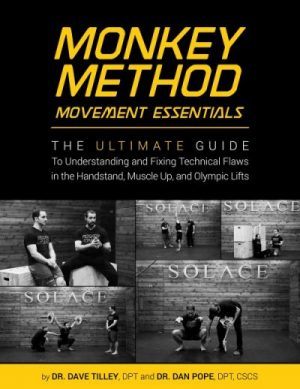If you’re a therapist or coach who regularly studies biomechanics you’ve undoubtedly heard of anterior pelvic tilt. Anterior pelvic tilt (as shown in the featured image above) is when the pelvis dumps forward excessively. Although the anterior pelvic tilt is sometimes over villified, I do believe it plays a role in a lot of people’s pain and injury. Some conditions that come to mind where anterior tilt can cause issues are with:
- Extension Based Low back pain – Potentially during overhead pressing
- Hip Pain – Femoral acetabular impingement in the bottom of the squat
Below is lower crossed syndrome (and upper crossed) popularized by the late Dr. Janda.
This condition is characterized generally by a few things:
- Inhibited (Weak / Not Working Properly) Abdominals
- Facilitated (Tight) Hip Flexors
- Facilitated (Tight) Low Back Musculature
- Inhibited (Weak /Not Working Properly) Glutes
Now, I think people understand that they need to mobilize the hips and strengthen and facilitate the glutes / core. What I don’t see are many people working on the tight low back musculature. As shown in the image above, this is definitely a part of lower crossed syndrome and anecdotally, usually is pretty stiff when people present in this posture. If we want to get people out of anterior pelvic tilt and they have a stiff lumbar spine, we’ve got to get them more mobile back there. The trouble is, I don’t see much information in the blogosphere out there addressing the issue.
I remember encountering this right after I took my first SFMA course. I’d get to the box where my patient had a stiff lower back (into flexion) and just didn’t have any tools or ideas on how to correct this issue. Since then I’ve had time to brainstorm, learn further (Shout out to Aline Thompson for the mentoring here) and experiment. Here are a few easy exercises I’ve found to be pretty tried and true when attempting to address the lower back.
- Lower Back Soft Tissue Work – I’ll use my hands and or tools for this in the clinic. I also like to do my soft tissue work with the patient in a slight stretch, so I’ll generally put them into a child’s pose during soft tissue work. I generally am not a fan of foam rolling the lower back but in this case it can be a great tool to loosen up the musculature in the lumbar spine.
- Quadruped Posterior Tilts with Sit-Back – The goal during this drill is to maximally posteriorly pelvic tilt prior to sitting back into a child’s pose. Ensure your patients or athletes don’t lose this tilt as they sit back
- Modified Rabbit Pose – I’m pretty sure I’ve stolen this one from the yoga world and I really like it. In most stretches people won’t feel much of any stretch sensation in the lower back. This stretch is different. I’d just be careful about applying too much pressure into lumbar flexion as well all know that too much lumbar flexion under load can be problematic for the spine.
- Wall Roll-ups – This one can be performed on a stool against the wall or sitting indian style on the floor with the back against the wall. The idea is to segmentally roll the spine up and down the wall, with one segment touching the wall at a time moving slowly all of the way up and down. For those with stiff spines they will generally have big chunks of the spine come off the wall at once. We’re attempting to minimize this.
So there you have it! I hope next time you encounter an anterior pelvic tilt that you think needs correcting you keep the lower back in mind. If you know someone who could benefit from this then please share!
Want more assessment techniques and strategies to improve your mobility? Check out my latest assessment and correction digital product:
Monkey Method – Movement Essentials
The Ultimate Guide to Understanding and Fixing Technical Flaws in the Handstand, Muscle-up and Olympic Lifts
World’s Weirdest Spine (Next to Dave Tilley),

